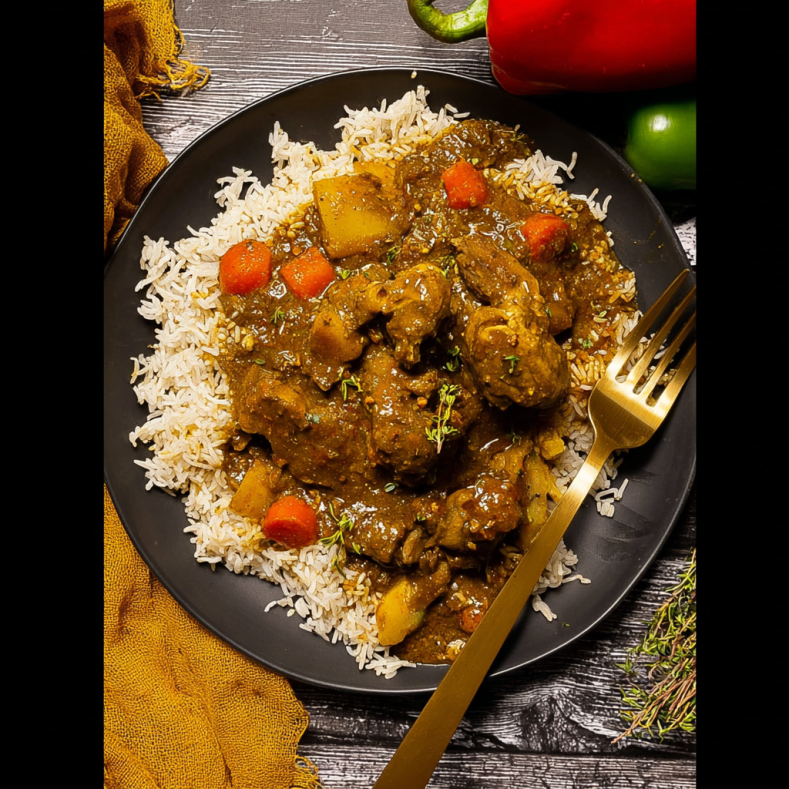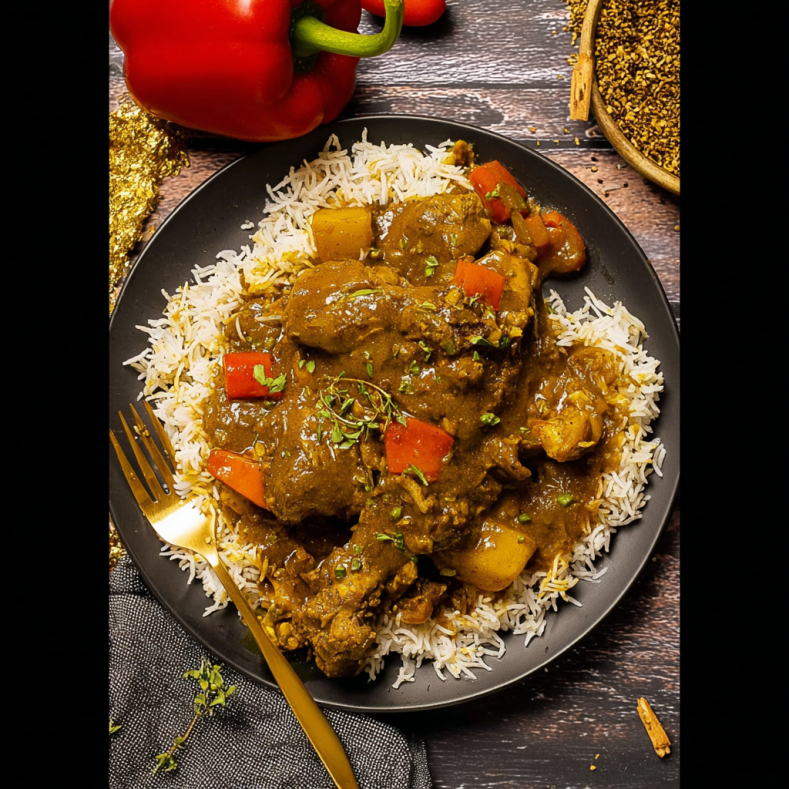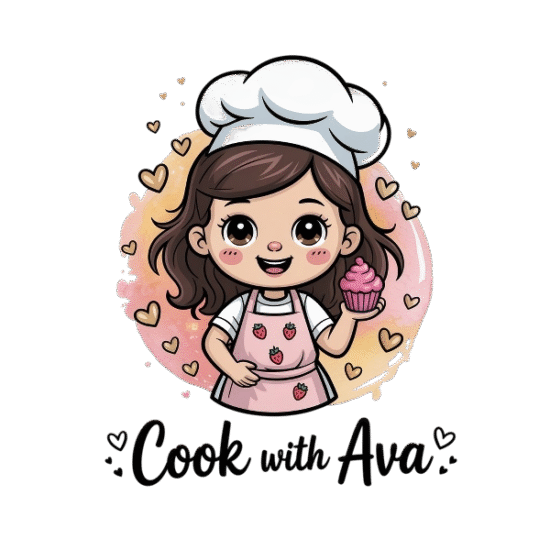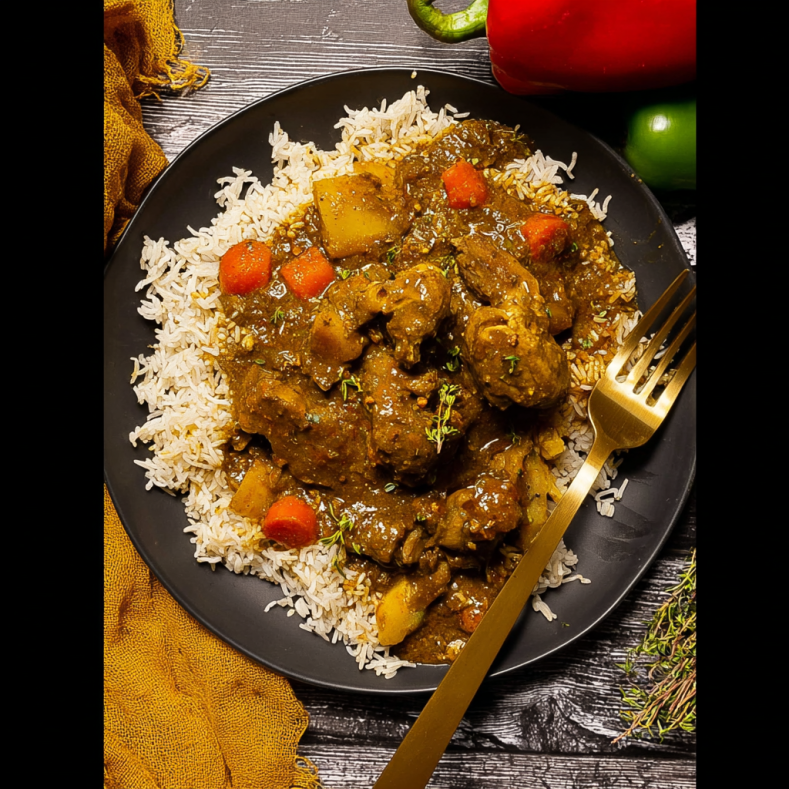There’s something magical that happens when curry powder meets chicken in a Jamaican kitchen. The aroma alone can transport you straight to the bustling markets of Kingston or the cozy family kitchens scattered across the Blue Mountains. This isn’t just another curry recipe – it’s a celebration of Caribbean heritage that’s been perfected through generations of island cooking.
What is Jamaican Curry Chicken Made of?

At its heart, Jamaican curry chicken is a beautiful symphony of tender chicken pieces swimming in a rich, golden sauce that’s been built from the ground up with authentic Caribbean flavors. The foundation starts with chicken (typically cut into generous chunks), curry powder, and a medley of aromatics that create layers of complexity you simply can’t achieve with shortcuts.
The magic lies in the supporting cast: onions that have been caramelized to perfection, garlic that’s been coaxed into releasing its full potential, scotch bonnet peppers that bring both heat and fruity undertones, and fresh thyme that adds an earthy brightness. What sets this apart from other curry dishes is the inclusion of ingredients like allspice berries, ginger, and that secret weapon – Jamaican browning sauce – which gives the dish its characteristic deep amber color and subtle sweetness.
What is Jamaican Curry?
Jamaican curry is the beautiful child of cultural fusion that happened when Indian indentured workers arrived in Jamaica during the 19th century. They brought their spice knowledge and curry-making techniques, which then married with local Caribbean ingredients and cooking methods to create something entirely unique.
Unlike its Indian cousins, Jamaican curry tends to be less complex in terms of spice count but more robust in flavor intensity. It’s typically drier than many Asian curries, with the sauce clinging lovingly to each piece of protein rather than creating a soup-like consistency. The heat level can vary dramatically depending on how heavy-handed you get with the scotch bonnet peppers, but there’s always an underlying warmth that builds gradually rather than hitting you like a freight train.
Why You’ll Love This Jamaican Curry Chicken
This recipe delivers comfort food at its absolute finest. The chicken becomes incredibly tender through a careful cooking process that ensures every fiber absorbs those complex curry flavors. What makes people fall head over heels for this dish is how it manages to be both exotic and familiar at the same time.
The depth of flavor is extraordinary – you’ll taste the warmth of cinnamon, the earthiness of turmeric, the slight bitterness of fenugreek, all balanced by the natural sweetness that develops when onions are properly caramelized. It’s the kind of meal that makes your kitchen smell like paradise and has neighbors asking what you’re cooking.
Beyond the incredible taste, this dish represents something special: it’s approachable enough for weeknight dinners but impressive enough for entertaining. Plus, it actually tastes better the next day, making it perfect for meal prep enthusiasts.
How To Make Authentic Jamaican Curry Chicken
The secret to authentic Jamaican curry chicken lies in understanding that this isn’t a rush job. The process builds flavor in stages, and each step contributes to the final masterpiece.
Start by seasoning your chicken pieces generously with salt, black pepper, and a portion of your curry powder. Let this sit for at least 30 minutes – patience here pays dividends later. While the chicken is absorbing those flavors, prepare your aromatics: dice your onions, mince your garlic, and slice your ginger.
Heat oil in a heavy-bottomed pot over medium-high heat. Brown the chicken pieces in batches, ensuring each piece develops a beautiful golden crust. This step is crucial – you’re building the foundation of flavor that will permeate the entire dish.
Remove the chicken and lower the heat to medium. Add your curry powder to the remaining oil and let it bloom for about 30 seconds until fragrant. This technique, called “burning the curry,” is essential for developing the deep, complex flavors that make Jamaican curry distinctive.
Add the onions and cook until they’re deeply caramelized and golden brown. This process takes patience – resist the urge to rush. Add garlic, ginger, and scotch bonnet pepper, cooking until the mixture becomes aromatic and the raw edge has softened.
Return the chicken to the pot, add your browning sauce for that signature color, and enough water or stock to barely cover the chicken. Bring to a boil, then reduce heat and let everything simmer until the chicken is fork-tender and the sauce has reduced to coat the back of a spoon.
Ingredients
For the Chicken:
- 3 lbs chicken, cut into serving pieces (thighs and drumsticks work beautifully)
- 3 tablespoons Jamaican curry powder (divided)
- 2 teaspoons salt
- 1 teaspoon black pepper
- 3 tablespoons vegetable oil
For the Curry Base:
- 2 large onions, diced
- 4 cloves garlic, minced
- 2 inches fresh ginger, minced
- 1 scotch bonnet pepper, seeded and minced (adjust to taste)
- 2 tablespoons Jamaican browning sauce
- 3 sprigs fresh thyme
- 4 allspice berries
- 2 cups chicken stock or water
- Salt and pepper to taste
Why Authentic Jamaican Curry?
Authenticity matters because it honors the cultural heritage behind this incredible dish. When you make genuine Jamaican curry chicken, you’re not just following a recipe – you’re participating in a culinary tradition that represents resilience, creativity, and the beautiful way cultures can blend to create something entirely new.
The authentic approach also simply tastes better. Those traditional techniques, like blooming the curry powder and taking time to properly caramelize the onions, create layers of flavor that shortcuts can’t replicate. The ingredients used in traditional Jamaican curry have been chosen and refined over generations – they work together in harmony because they’ve had decades to prove their worth.
What Meats or Meat Alternatives are Best with Curry?

While chicken reigns supreme in Jamaican curry, this cooking method works beautifully with various proteins. Goat meat is actually the traditional choice in many Jamaican households – it becomes incredibly tender when slow-cooked and has a rich, distinctive flavor that pairs perfectly with curry spices.
Beef chuck roast or short ribs work wonderfully, though they require longer cooking times. Lamb shoulder is another excellent choice that brings its own unique flavor profile to the dish. For seafood lovers, firm fish like snapper or king fish can be curried, though they require a gentler touch and shorter cooking time.
Vegetarian options are equally delicious. Firm tofu that’s been pressed and cubed absorbs the curry flavors beautifully. Root vegetables like sweet potato, pumpkin, and cassava are traditional plant-based options that create satisfying, hearty meals.
Tips to Making the Best Jamaican Curry Chicken
Temperature control is everything. Keep your heat at medium when blooming the curry powder – too high and you’ll burn the spices, creating bitter flavors. When browning the chicken, don’t overcrowd the pan; work in batches if necessary to ensure proper caramelization.
The quality of your curry powder makes a tremendous difference. If possible, source authentic Jamaican curry powder from Caribbean markets – the blend of spices is specifically formulated for this style of cooking. Store-bought curry powder from regular supermarkets can work, but the flavor won’t be quite the same.
Don’t skip the browning sauce. This ingredient is crucial for achieving that distinctive deep golden color and subtle sweetness that characterizes authentic Jamaican curry. If you can’t find it locally, you can make your own by caramelizing sugar until it’s dark brown, then carefully adding water.
Timing is crucial with scotch bonnet peppers. Add them early if you want heat throughout the dish, or add them later if you prefer a milder curry with just a hint of that fruity scotch bonnet flavor.
What is Curry Powder?
Curry powder is a spice blend that varies significantly depending on its origin and intended use. Jamaican curry powder typically contains turmeric (which gives it that golden color), coriander, cumin, fenugreek, fennel seeds, and various other warming spices like cinnamon and allspice.
The key difference between generic curry powder and Jamaican curry powder is the specific proportions and sometimes unique additions like allspice, which reflects the island’s spice heritage. The blend is designed to complement Caribbean cooking methods and local ingredients, creating flavors that work harmoniously with items like scotch bonnet peppers and browning sauce.
Good curry powder should be aromatic and slightly gritty when rubbed between your fingers. If it’s been sitting in your spice cabinet for years, it’s time for a replacement – fresh curry powder makes an enormous difference in the final dish.
What is the Difference between Curry and Jamaican Curry?
The differences are both subtle and profound. Indian curries often use fresh spice pastes, coconut milk, and complex layering of numerous individual spices. They can be quite wet and are often served over rice with the sauce being almost soup-like in consistency.
Jamaican curry, by contrast, is typically drier with the sauce clinging to the protein rather than pooling in the bowl. The spice profile is less complex but more intense, focusing on the harmony between curry powder, browning sauce, and aromatics like scotch bonnet peppers and thyme.
The cooking technique also differs. Jamaican curry emphasizes the “burning” of curry powder in oil to develop deep flavors, while many Indian preparations focus on building spice pastes or tempering whole spices. The result is a dish that’s distinctly Caribbean – warmer, more direct in its flavor approach, and perfectly suited to the island lifestyle.
What is Jamaican Browning Sauce?
Jamaican browning sauce is liquid gold in Caribbean cooking. It’s essentially caramelized sugar that’s been carefully cooked until it reaches a deep, dark brown color, then diluted with water to create a sauce-like consistency. This process creates complex flavors – there’s sweetness, but also slight bitterness and deep caramel notes that add incredible depth to curries.
The sauce serves multiple purposes: it provides that characteristic deep amber color that makes Jamaican curry so visually appealing, adds subtle sweetness that balances the heat from scotch bonnet peppers, and contributes to the overall complexity of flavors that makes this dish so addictive.
You can find bottled browning sauce in Caribbean markets, or make your own by carefully caramelizing sugar in a heavy pan until it’s very dark brown, then slowly adding water while stirring constantly. Be extremely careful – caramelized sugar is extremely hot and can cause serious burns.
What To Serve With Jamaican Curry Chicken?
Rice and peas is the classic accompaniment – the creamy coconut rice studded with kidney beans provides the perfect backdrop for the intense flavors of curry chicken. The mild, creamy texture balances the bold spices beautifully.
Plain white rice works wonderfully too, especially jasmine or basmati rice that can absorb the curry sauce. Some families prefer rice cooked with a bit of coconut milk for extra richness.
Traditional sides include festival (sweet fried dumplings), steamed cabbage with carrots, or plantains – either fried sweet plantains or boiled green plantains. These sides provide different textures and flavors that complement the curry without competing with it.
Don’t forget fresh bread options like hard dough bread or roti, which are perfect for sopping up every drop of that precious curry sauce.
What Is The Ideal Chicken Cut To Use?
Dark meat reigns supreme for curry chicken. Thighs and drumsticks have enough fat content to stay moist during the longer cooking process, and their texture holds up beautifully to the robust flavors of curry. The bone-in pieces also contribute additional flavor to the sauce as they cook.
If you prefer white meat, bone-in chicken breasts can work, but they require more careful attention to prevent overcooking. Cut them into smaller pieces than you would dark meat, and consider adding them to the pot slightly later in the cooking process.
For convenience, boneless thighs are an excellent compromise – they cook faster than bone-in pieces but still maintain that rich flavor and tender texture that makes curry chicken so satisfying. Cut them into generous chunks so they don’t fall apart during cooking.
Avoid boneless, skinless breasts unless you’re very experienced with this recipe – they tend to become dry and stringy in the extended cooking process that curry chicken requires.
Jamaican Curry Chicken Q + A’s
Can I make this ahead of time? Absolutely! Curry chicken actually improves with time as the flavors continue to meld. Make it a day ahead and reheat gently before serving.
How spicy is this dish? The heat level depends entirely on how much scotch bonnet pepper you use. Start with a small amount and adjust to your tolerance. Remember, you can always add more heat, but you can’t take it away.
Can I freeze curry chicken? Yes, it freezes beautifully for up to three months. Thaw completely before reheating, and you might need to add a splash of water if the sauce has thickened too much.
What if I can’t find scotch bonnet peppers? Habanero peppers are the closest substitute, though they lack the distinctive fruity flavor of scotch bonnets. In a pinch, jalapeños can work, though you’ll need more of them to achieve similar heat levels.
More Jamaican Recipes That You’ll Love!
Once you’ve mastered curry chicken, the world of Jamaican cuisine opens up before you. Try your hand at jerk chicken with its complex spice rub and smoky flavor, or oxtail stew that showcases similar braising techniques with different spices.
Ackee and saltfish, Jamaica’s national dish, offers a completely different flavor profile but uses many of the same foundational cooking techniques. Brown stew chicken provides another take on how Jamaican cooks work with poultry, while curry goat represents the ultimate expression of Caribbean curry-making skills.
Don’t overlook the sides and accompaniments that make Jamaican meals complete – rice and peas, festival, bammy, and various vegetable preparations that showcase the island’s incredible produce.
MADE OUR RECIPE(S)?
We’d love to see your curry chicken creations! The beautiful thing about this dish is how each cook brings their own touch to it while maintaining those essential authentic elements. Some families prefer their curry a bit drier, others like more sauce. Some go heavy on the scotch bonnet heat, while others keep it mild enough for children to enjoy.
Share your variations and discoveries – did you find a particular brand of curry powder that worked exceptionally well? Did you discover a perfect cooking time for your preferred level of tenderness? The community of curry lovers is always eager to learn from each other’s experiences.

